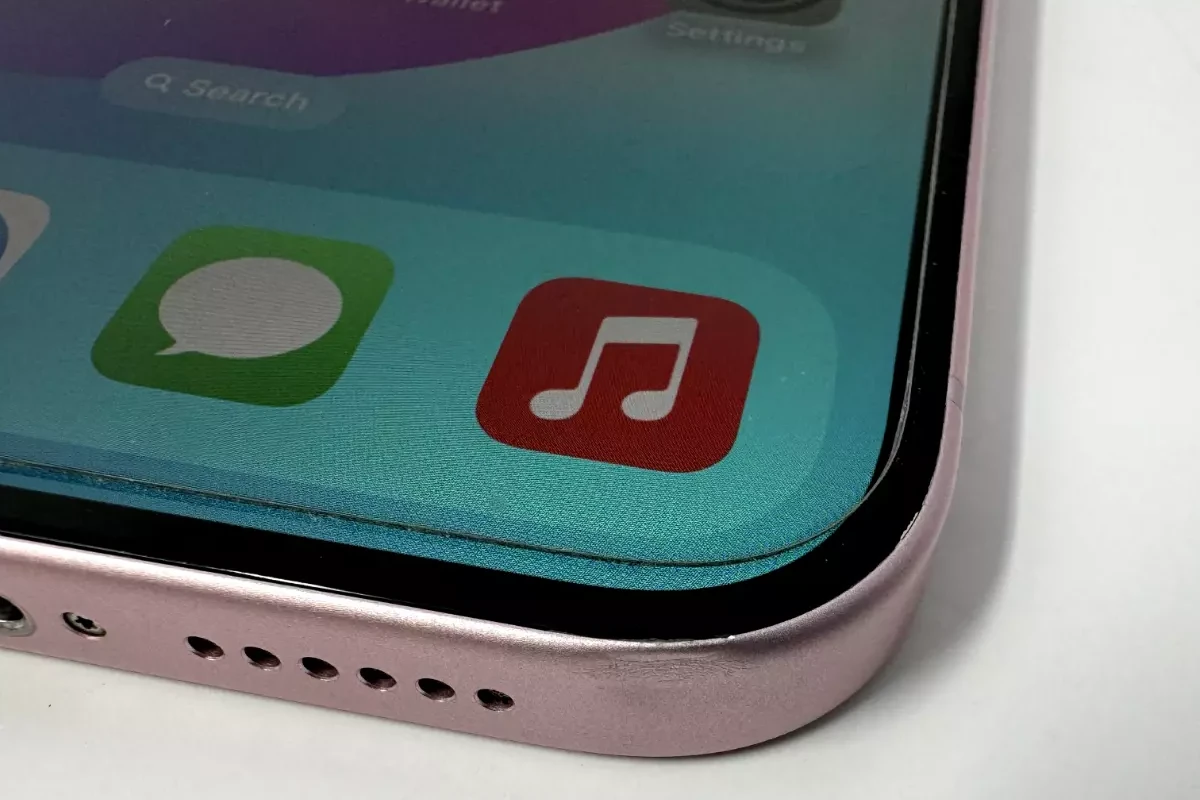Is your iPhone’s volume too low? This common issue can be frustrating, especially when you’re trying to enjoy music or make important calls. Several quick fixes can boost your iPhone’s speaker sound and restore it to normal volume levels.
Low volume on iPhones can stem from various causes. Software settings, hardware problems, or even accumulated dirt in the speaker grilles can all contribute to reduced sound output. Understanding these factors is crucial for effective troubleshooting.
Apple has designed iPhones with multiple volume controls and settings. Adjusting these correctly can often resolve low volume issues without the need for complex repairs. Simple steps like checking the ringer switch, cleaning the speakers, or updating iOS can make a significant difference in your device’s audio performance.
Troubleshooting Low iPhone Speaker Sound
Experiencing low speaker sound on your iPhone can be frustrating, but there are several troubleshooting steps you can take to resolve the issue. Before heading to an Apple Store, try these simple fixes to get your iPhone speakers working properly again.
1. Check Your Volume and Settings
- Volume Level: Make sure your volume is turned up all the way by pressing the volume up button on the side of your iPhone.
- Ring/Silent Switch: Ensure the Ring/Silent switch on the side of your iPhone is not switched to silent mode (showing a red dot).
- Control Center: Open the Control Center (swipe down from the top-right corner of the screen) and check the volume slider there as well.
- Bluetooth: If your iPhone is connected to a Bluetooth device, like headphones or a speaker, it may be routing the audio there instead of through the built-in speakers. Disconnect from any Bluetooth devices in Settings > Bluetooth.
2. Clean the Speakers
Dust, debris, or lint can accumulate in the speaker grilles and muffle the sound. Use a soft-bristled brush, compressed air, or a cotton swab to gently clean the speaker openings at the bottom of your iPhone.
3. Restart Your iPhone
A simple restart can often resolve temporary software glitches that may be affecting the speaker output. Press and hold the side button and either volume button until the power-off slider appears. Slide to power off, then turn your iPhone back on.
4. Check for Software Updates
Apple regularly releases software updates that include bug fixes and performance improvements. Go to Settings > General > Software Update to see if a new update is available. If so, install it.
5. Test the Speakers with Different Audio
Try playing different types of audio, such as music, videos, and ringtones, to see if the low sound issue is consistent across all sources. This can help determine if the problem is with the speakers themselves or with a specific app or audio file.
6. Check for Water Damage
If your iPhone has been exposed to water, it may have caused damage to the speakers. Look for signs of water damage, such as a red liquid contact indicator inside the SIM card tray slot. If you suspect water damage, contact Apple Support for assistance.
7. Try a Hard Reset (Advanced)
A hard reset can sometimes resolve more persistent software issues. Note that this will not erase your data, but it’s always a good idea to have a backup. The steps for a hard reset vary depending on your iPhone model:
- iPhone 8 and later: Press and quickly release the volume up button, then press and quickly release the volume down button. Then, press and hold the side button until the Apple logo appears.
- iPhone 7 and 7 Plus: Press and hold the side button and the volume down button simultaneously until the Apple logo appears.
- iPhone 6s and earlier: Press and hold the Home button and the side (or top) button simultaneously until the Apple logo appears.
8. Contact Apple Support
If none of the above solutions work, it’s best to contact Apple Support or visit an Apple Store for further assistance. They can diagnose the problem and offer repair or replacement options if needed.
Additional Tips
- Avoid using your iPhone in extremely dusty or dirty environments.
- Don’t expose your iPhone to excessive moisture or liquids.
- Use a protective case to help prevent damage to the speakers.
Do Not Disturb and Focus Modes
While unlikely to cause consistently low sound, it’s worth checking your Do Not Disturb and Focus mode settings. Do Not Disturb can silence calls and notifications, while Focus modes can filter notifications and allow only specific apps to make sounds. Ensure these settings are not inadvertently muting or lowering your speaker volume.
To check Do Not Disturb, open the Control Center and see if the crescent moon icon is purple. If it is, tap it to turn off Do Not Disturb.
To check Focus modes, also go to the Control Center. If a Focus mode is active, its icon (such as a car for Driving Focus) will be displayed. Tap it to either adjust the Focus mode settings or turn it off.
Remember, if you’ve tried these troubleshooting steps and are still experiencing issues with your iPhone speaker, it’s best to seek help from Apple Support. They have the expertise and tools to diagnose and resolve any hardware or software problems that may be affecting your device.
Key Takeaways
- Check software settings and clean speaker grilles to improve iPhone volume
- Adjust ringer and alerts slider in Sound Settings for better audio output
- Update iOS and reset all settings if volume issues persist
Troubleshooting iPhone Volume Issues
Low volume on an iPhone can stem from various causes, ranging from simple settings adjustments to hardware malfunctions. Identifying and addressing these issues can help restore proper audio output.
Assessing Volume Controls and Settings
Check the physical volume buttons on the side of the iPhone. Press the up button to increase volume. Verify the ringer switch isn’t set to silent mode. Open Control Center and adjust the volume slider. Go to Settings > Sounds & Haptics and ensure the Ringer and Alerts slider is set to an appropriate level.
Examine volume limit settings in Settings > Music > Volume Limit. Disable this feature if it’s restricting audio output. Review EQ settings in Settings > Music > EQ and switch to “Off” or “Flat” to test if custom EQ settings are affecting volume.
Confirm Bluetooth is turned off if not using external speakers or headphones. Disconnect any connected Bluetooth devices that might be redirecting audio output.
Addressing Software Glitches
Restart the iPhone to clear temporary software issues. Press and hold the power button, then swipe to power off. Wait 30 seconds before turning it back on.
Update iOS to the latest version. Go to Settings > General > Software Update. Install any available updates, as they often include bug fixes for audio problems.
Reset all settings if issues persist. Navigate to Settings > General > Transfer or Reset iPhone > Reset > Reset All Settings. This won’t delete data but will revert all settings to default.
Investigating Hardware Malfunctions
Inspect the speaker grilles for dust or debris. Gently clean them with a soft brush or compressed air. Avoid using liquids or sharp objects that could damage the speakers.
Test audio output with headphones. If sound is normal through headphones but not speakers, the issue may be hardware-related.
Check the charging port for lint or debris that could be affecting audio routing. Clean carefully with a toothpick or compressed air.
Seeking Professional Support
Contact Apple Support if troubleshooting steps don’t resolve the issue. Describe the problem and steps taken to address it.
Schedule an appointment at an Apple Store or Authorized Service Provider for in-person diagnosis. They can run diagnostics and determine if hardware repair is needed.
Consider warranty coverage or AppleCare+ if applicable. These may cover repair or replacement costs for qualifying issues.
Frequently Asked Questions
iPhone users often encounter issues with low speaker volume. These problems can arise from various causes and may require different solutions depending on the specific situation.
Why does my iPhone speaker have such low volume during calls?
Low call volume can stem from software settings or hardware issues. Check the in-call volume settings and ensure the phone is not in silent mode. Clean the earpiece speaker gently with a soft brush to remove any debris that might be blocking sound output.
What could be causing the sudden decrease in my iPhone’s volume?
A sudden volume drop may result from software glitches, accidental setting changes, or physical damage. Restart the iPhone to resolve temporary software issues. Check for any recent iOS updates that might have affected audio settings.
How can I resolve low volume issues when playing music on my iPhone?
Start by checking the volume limiter in Settings > Music > Volume Limit. Ensure it’s turned off or set to maximum. Clean the speaker grills and test the audio with different apps to isolate the problem.
Is there a way to increase the volume of my iPhone speaker beyond the maximum setting?
iOS doesn’t offer built-in options to exceed the maximum volume. Third-party apps claiming to boost volume often just adjust equalizer settings. For safer volume enhancement, use external speakers or headphones.
What steps should I take if I can barely hear through my iPhone speaker?
First, check if the issue persists with headphones. If not, clean the speakers and ensure no case is blocking them. Update iOS to the latest version. If problems continue, contact Apple Support for potential hardware diagnostics.
How can I troubleshoot the issue of my phone’s volume being low even when set to maximum?
Start by turning off any active sound effects or equalizer settings. Disable Bluetooth to ensure audio isn’t being routed elsewhere. Perform a force restart of the iPhone. If these steps don’t help, consider resetting all settings as a last resort before seeking professional assistance.







